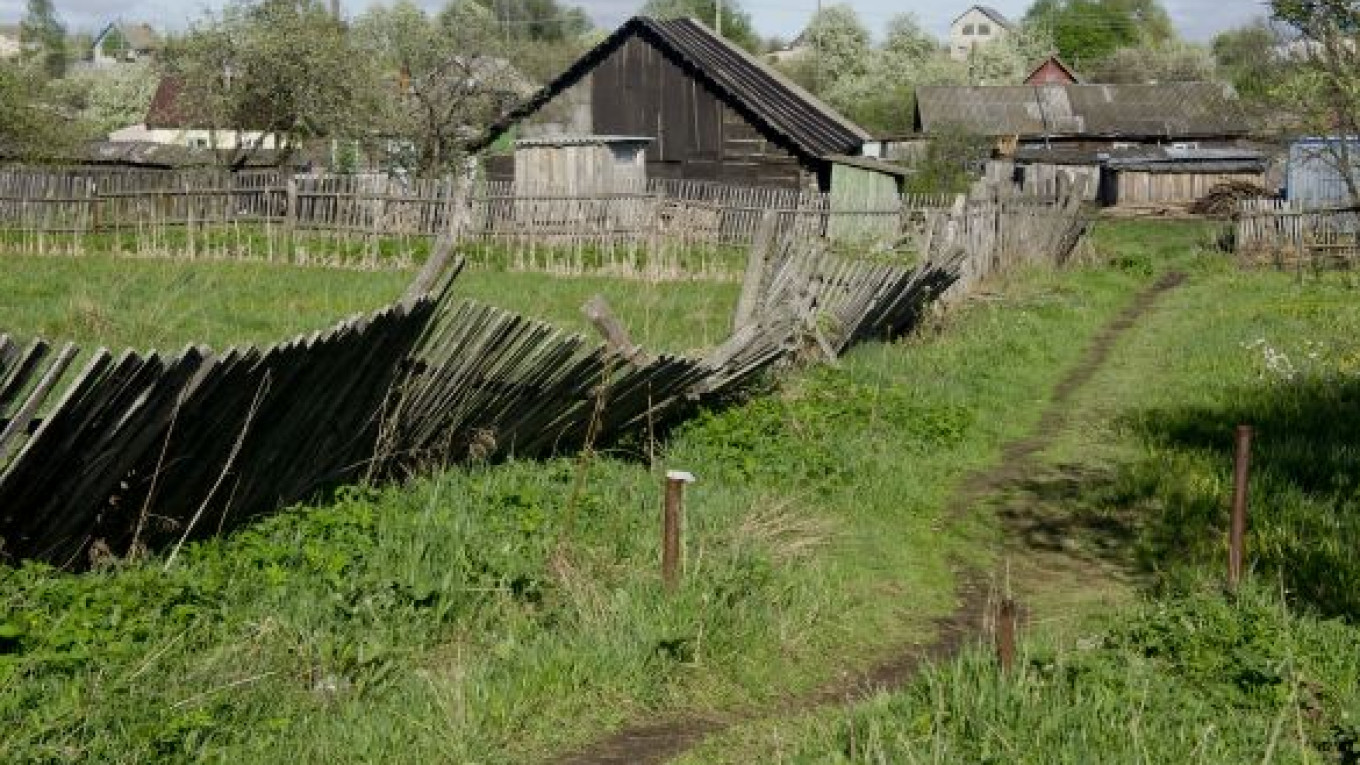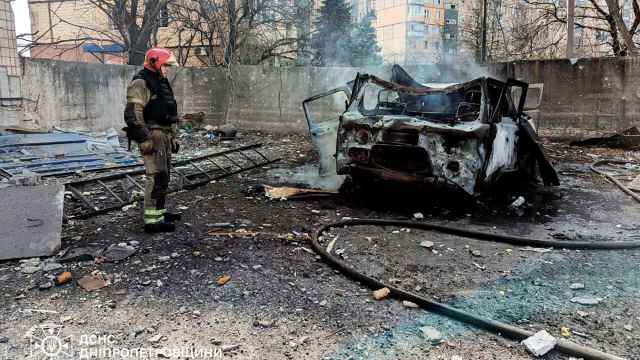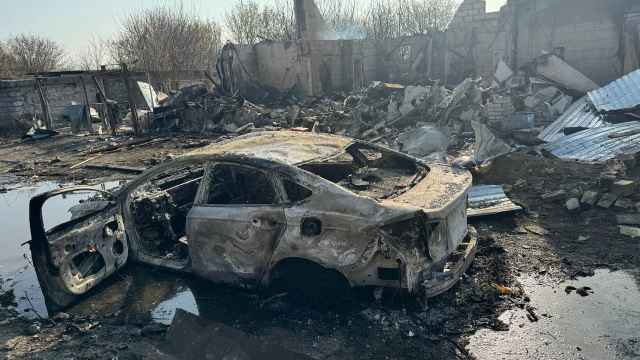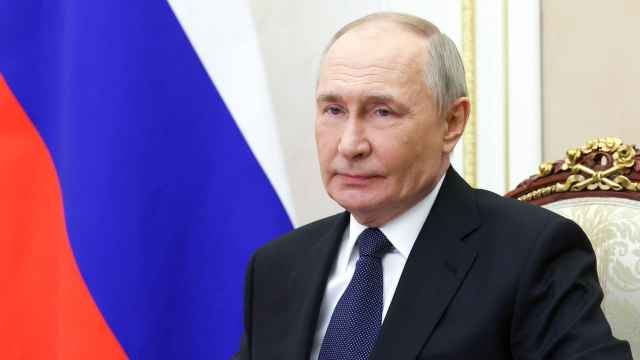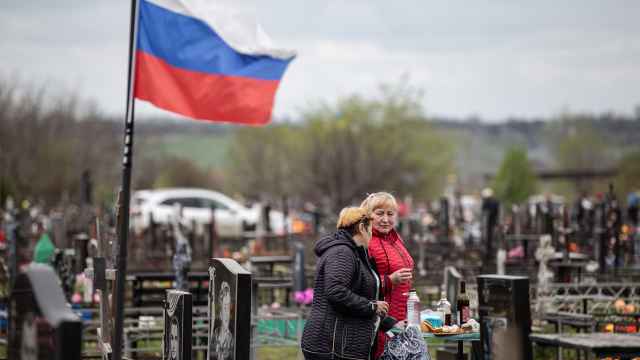The Kremlin's move to revive ambitious Luzhkov-era plan to build a gigantic circular highway 50 kilometers beyond the Moscow Ring Road is bringing to life the dreams of developers and nightmares of owners of property in its path.
Construction of the Central Ring Road was first approved by federal authorities in 2001 as part of a plan to direct heavy transportation flows away from the city center, beginning more than a decade of apprehension for home owners whose cottages and land plots might be expropriated to give way to the new road.
"An acquaintance was looking at the development plan of his rural settlement … He was surprised to find a pedestrian bridge belonging to the Central Ring Road right in place of his barbecue oven," user baus said in 2008 in a post on one of the forums for dacha owners.
But the project stalled on uncertainty about financing and organizational details.
Now the Central Ring Road is being given another chance in what is widely expected to boost development of the Moscow region and ease Moscow's heavy traffic by diverting freight transportation.
The 339 kilometer ring — to be completed by 2018 — will cost 300 billion rubles ($9 billion) to build, of which 150 billion rubles will come from the National Welfare Fund, with the remainder to be provided by the federal budget and private investors.
Side Effects
Revival of the project has spurred new discussions about land expropriation and potential damage to the surrounding environment — especially in the light of the long-standing conflict around Khimki forest.
Construction of the highway will affect at least 600 private landowners whose plots are located on the territories subject to expropriation, said Maria Litinetskaya, chief executive of Metrium Group. This will require the government to set aside a minimum of 10 billion rubles to compensate their losses, she added.
Implementing the project will have a negative effect on so-called old dacha settlements that are located at a distance of about 35 kilometers from the Moscow and are traditionally in high demand, Litinetskaya said.
Those are the places where dachas were provided by state in the Soviet times to high level officials, renowned scientists and members of the political and cultural elite.
The most popular locations include settlements like Frunzevets — a beloved recreation place for novelist Anton Chekhov and poet Sergei Yesenin occupied by military big wigs in the 1930s — or Vatutinki built in the 1930s and well-known for its famous residents like singer and poet Vladimir Vysotsky.
Such settlements are usually surrounded by picturesque forests and rivers or ponds, and "this favorable environment will be destroyed after a new multilane highway appears," Litnetskaya said.
Similar concerns were voiced by Greenpeace earlier this year. Alexei Yaroshenko, who oversees the organization's forest program, warned that building the Central Ring Road will reduce the so-called green belt — about 40,000 hectares of forests around Moscow — by as much as 12 percent.
"The remaining woods in the Moscow region, which are already not very large, will turn into small islands, thus losing their value. But the main danger is that this project in fact extends the borders of the metropolis to 120 kilometers in diameter … You don't have to be an environmentalist to understand that there won't be place for the real wild nature there," he told Slon.ru in March
After the meeting earlier this month on developing road infrastructure around Moscow, Mayor Sergei Sobyanin said building the Central Ring Road was unlikely to provoke any conflicts with landowners due to the low population density around the future highway.
He said properties would be assessed before expropriation for owners to get adequate compensation, Interfax reported.
But Litinetskaya of Metrium Group pointed out that the authorities might still face disgruntled property owners. "It is hard to believe that the compensation will be fair … Land is the kind of property that is very hard to evaluate," she said, adding that the ultimate value is being determined depending on location, accessibility, size, infrastructure and other factors.
Infrastructure Needed
At the same time, analysts expect that the new highway will benefit many developers, primarily those building commercial properties.
"If the construction deadlines are met, the vehicles moving along this road will require much infrastructure like logistics complexes and warehouses, technology parks, gasoline stations, mini-hotels and parking complexes," said Yelena Mishina, development direct at MIEL's commercial property department.
She said development of territory along the highway would cause a surge in land prices, as with the area around the Moscow Ring Road over the last decade.
The price of land for commercial projects is likely to at least double after the construction of the Central Ring Road kicks off, with an equal increase to follow within the first two years of the highway coming on line, Mishina said.
Land prices in the affected part of the Moscow region currently start from $5,000 per 100 square meters in the north to peak at $15,000 per 100 square meters in the west.
The area around the new road is likely to see office complexes, too. As construction of offices is gradually moving to Moscow's outskirts, the demand for office space around the Central Ring Road might be high in five to six years, said Dmitry Taganov, head of research at INKOM.
Companies involved in residential construction will also benefit from the project, since the future highway will increase accessibility of surrounding lands, thus fueling interest of potential buyers.
Analysts expect that the Central Ring Road will catalyze a boom in residential construction in the surrounding areas, with low-rise and mid-rise housing to be in high demand. At the same time, they warned that housing on the plots adjoining the highway directly is unlikely to sell out because the noise and dust from the highway will make such homes unattractive.
"The Central Ring Road will increase transportation accessibility of the plots located at a distance of 3 to 5 kilometers from the highway, so projects with such location will be profitable," Taganov said.
Still it will take a while for the first buyers to come, analysts said. Potential homeowners are likely to wait until the ring road is completed, since the prospect of living on a huge construction site isn't very appealing.
For a map of the future road go to ring-road.ru/project/map/
Contact the author at irina.filatova@imedia.ru
A Message from The Moscow Times:
Dear readers,
We are facing unprecedented challenges. Russia's Prosecutor General's Office has designated The Moscow Times as an "undesirable" organization, criminalizing our work and putting our staff at risk of prosecution. This follows our earlier unjust labeling as a "foreign agent."
These actions are direct attempts to silence independent journalism in Russia. The authorities claim our work "discredits the decisions of the Russian leadership." We see things differently: we strive to provide accurate, unbiased reporting on Russia.
We, the journalists of The Moscow Times, refuse to be silenced. But to continue our work, we need your help.
Your support, no matter how small, makes a world of difference. If you can, please support us monthly starting from just $2. It's quick to set up, and every contribution makes a significant impact.
By supporting The Moscow Times, you're defending open, independent journalism in the face of repression. Thank you for standing with us.
Remind me later.


